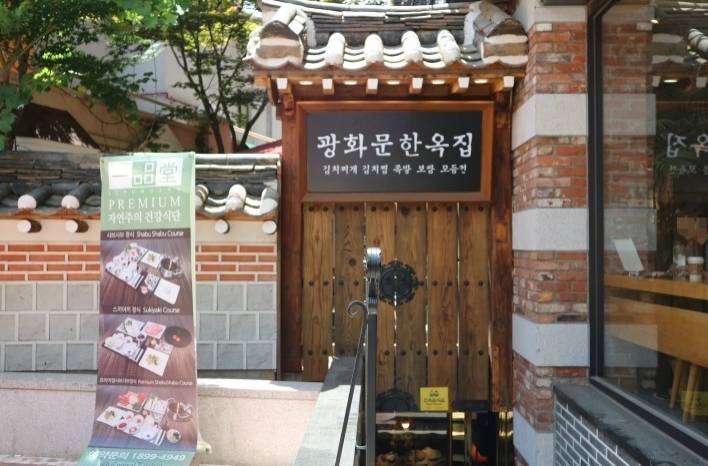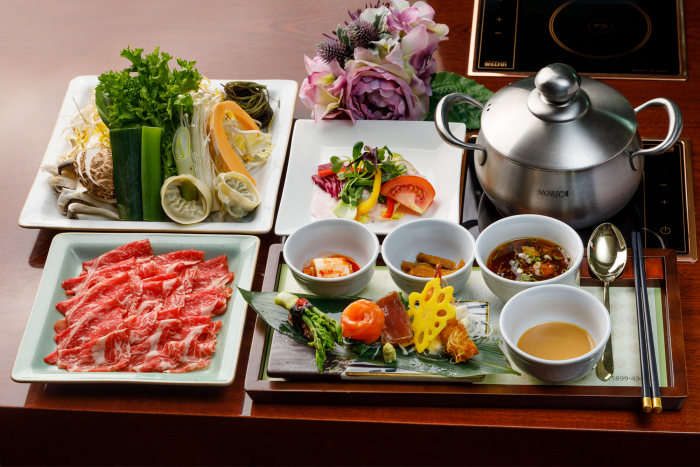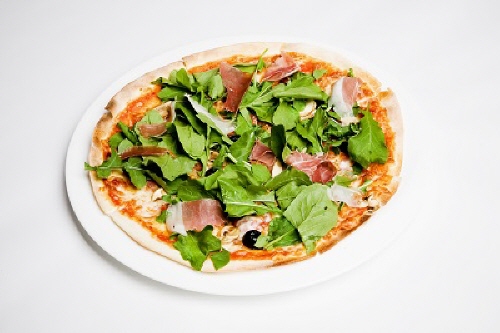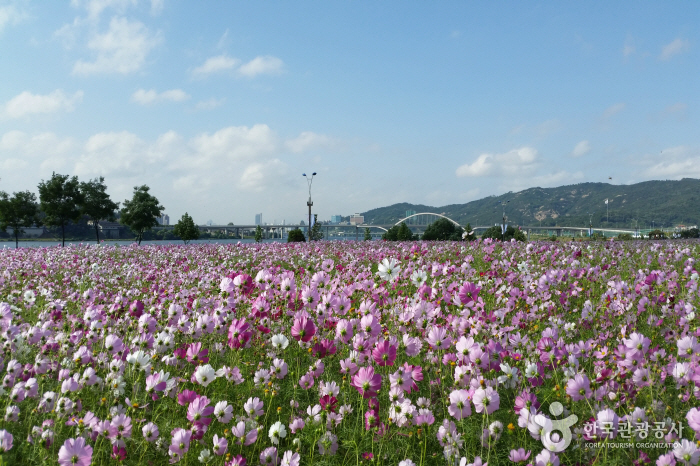Gwanghwamun Hanokjip (광화문한옥집)
10.1Km 2021-03-18
7, Saemunanro5ga-gil, Jongro-gu, Seoul
+82-2-731-2500
A store with rooms reproducing a traditional kitchen. The best menu at this restaurant is napa wraps with pork. This is a Korean cuisine located in Gwanghwamun Gate, Seoul.
Ilpumdang Premium (일품당프리미엄)
10.1Km 2021-04-20
7, Saemunan-ro, 5ga-gil, Jongro-gu, Seoul
+82-2-1899-4949
A shabu-shabu specialty restaurant located in Gwanghwamun Gate, Seoul. A store with rooms. The most famous menu is shabu-shabu.
Museo de Historia de Seúl (서울역사박물관)
10.2Km 2023-08-11
Saemunan-ro 55, Jongno-gu, Seúl
El Museo de Historia de Seúl refleja en forma ordenada la historia y cultura de la capital de Corea. Aquí podrá conocer y aprender sobre Seúl e incrementar su capacidad de entendimiento acerca de ella. En este museo observará los vestigios históricos y culturales de Seúl, desde la era prehistórica a los días modernos. Muchas de las reliquias de la dinastía Joseon fueron donadas durante la Campaña de Donación de Reliquias. La cantidad de tesoros históricos que se expone aumenta día a día.
En mayo de 2002 el museo fue renovado, 17 años después de su apertura, por lo que ostenta unas instalaciones de lo más modernas. Si lleva equipaje pesado, solicite que se lo guarden en el guardarropa que se encuentra en la planta baja y diríjase al tercer piso, en donde se encuentran las salas principales de exposición. Allí podrá ver el paisaje de lo que era Seúl durante la dinastía Joseon, como así también el ambiente de la vida cotidiana de la gente de esta ciudad. También podrá observar las piezas en exposición en el museo cibernético por Internet. En el primer piso se encuentran la mayoría de las instalaciones de comodidad, la sala de cuidado de niños, una tienda comercial, una tienda de suvenires, asientos para descansar, etc.
Hyehwa1938 [Korea Quality] / 혜화1938 [한국관광 품질인증]
10.2Km 2023-04-13
7, Sungkyunkwan-ro 16-gil, Jongno-gu, Seoul
+82-10-7107-1752
Located in (no suggestions)-dong of Seoul, Hyehwa 1938 is a lodging facility which is based on the remodeling of an 80-year- old traditional Korean house. A traditional Korean house expert initially wanted to use it as an office but later decided to turn it into a guest house due to its large size. As a result, the unique beauty of traditional Korean house was revived while improving practicality. The Woojeong room and Sarang room are now resized to accommodate max 8 persons which used to be only max 4 in the past. Despite the remodeling, the aura and atmosphere of the traditional Korean house is well preserved. Inside the room, you can see that the chandelier of the rich house in the '30s are accompanied by modern furniture and electronics which maintain unique harmony. Open the windows to see sansuyu and maehwa along with other various seasonal trees with beautiful colors and also the space such as edges and sewers are well arranged to avoid any discomforts with your eyesight. The heart of architecture offers only two rooms for guests, and you are all welcome to enjoy the true beauty of Korea.
Bukchonmaru hanok guesthouse [Korea Quality] / 북촌마루한옥게스트하우스 [한국관광 품질인증]
10.2Km 2020-09-10
152, Changdeokgung-gil, Jongno-gu, Seoul
+82-10-3253-8751
Bukchonmaru Hanok Guesthouse is located between “Bukchon Views 2 and 3” on a hill in Bukchon Village in Seoul. This two-storied hanbok building with a terrace, which is rarely found among other hanok structures in the area, offers a splendid view of Seoul. In particular, the summit of a hill next to the main gate of Choong Ang High School where the guesthouse is situated is known as the filming location for the famous Korean TV series Winter Sonata (2002). When you open the main gate and go up to the first floor, a small yard is seen with a group of jars on one side. After entering the sliding door through the yard, there is daecheong maru (main floored room) that features the doors opening in all directions and a high ceiling with rafters, making the space open and cozy. The hanok building consists of two floors – the ground floor is equipped with special furniture, a jar table and a log chair made by the owner, and on the first floor are guestrooms comprised of one large room and two small rooms. The neat and clean rooms are designed in a simple way and have lovely bedding with the pattern of five cardinal colors. Its staff members can speak English and Chinese to communicate with guests from other countries. Every morning, guests engage in animated conversation while enjoying a Korean home-style breakfast prepared by the owner in a friendly atmosphere. After having breakfast, if guests want, they can try on traditional Korean clothes (hanbok) and take photographs inside and around the guesthouse to create interesting memories. The guesthouse also provides a hanbok rental service (KRW 30,000 for a day) and tourists wearing traditional Korean clothes can enter both Changdeokgung Palace and Gyeongbokgung Palace, which can be reached on foot within 10 to 15 minutes, free of charge. Moreover, guests can enjoy an open view of the area including Gahoe-dong, Gye-dong and even the lights of the Namsan Seoul Tower at night from the roof top.
The Hanok Smith Likes (스미스가 좋아하는 한옥)
10.2Km 2019-11-26
22-7, Samcheong-ro, Jongno-gu, Seoul
+82-2-722-7003
The Hanok Smith Likes is an Italian restaurant that can be found in an alley near the Embassy of the Republic of Poland. The restaurant is famous for serving homemade Italian cuisine in traditional Korean house in Samcheong-dong.
The Smith in the restaurant’s name refers to a Mr. Smith, a virtual person cooks his favorite dishes in a hanok. One of the interesting aspects about this restaurant is that they serve hwadeok pizza (brick oven pizza) and pastas which are not the Korean dishes one might expect given the hanok exterior. They also serve salads, risotto, steak and wine at the restaurant. Particularly, the nighttime atmosphere of the restaurant offers a more serene and cozy experience thanks to the traditional hanok architecture.
Tumbas Reales Uireung en Seúl (서울 의릉) [Patrimonio Cultural de la Humanidad de la Unesco]
10.2Km 2020-12-18
Hwarang-ro 32-gil 146-20, Seongbuk-gu, Seúl.
+82-2-964-0579
Uireung son las tumbas del rey Gyeongjong (1688-1724, rey de 1720 a 1724), el 20º rey de la Ddinastía Joseon, y su segunda esposa la reina Seonui (1705-1730).
El rey Gyeongjong fue el primer hijo del rey Sukjong y Janghuibin, una de las concubinas del rey. El rey Gyeongjong nació débil y anémico, y falleció solo 4 años después de ser proclamado rey, sin ningún logro político de importancia. La reina Seonui fue princesa en 1718 y reina en 1720, cuando el tey Gyeongjong ascendió al trono. Está considerada una reina prudente. Las tumbas Uireung se diferencian de otras tumbas reales en que no están una al lado de la otra, sino que siguen la teoría geomántica y una está justo detrás de la otra.
Parque Guri del Río Hangang (Parque Cosmos) (구리시민한강공원(코스모스공원))
10.2Km 2021-07-02
Topyeong-dong, Guri-si, Gyeonggi-do
Es un espacio al aire libre en donde los visitantes pueden disfrutar del aire fresco un entorno natural. En particular, el parque dispone de hermosas áreas destinadas a las flores, en el mes de mayo florece la colza y en septiembre los cosmos, por lo que ofrece un paisaje espléndido a los turistas y residentes de la zona.
Yeonwoohouse [Korea Quality] / 연우하우스 [한국관광 품질인증]
10.2Km 2023-04-13
5-13, Bukchon-ro 12-gil, Jongno-gu, Seoul
Yeonwoo Guesthouse is a quiet and cozy traditional Korean guest house (hanok) located in Gahoe-dong, Jongnogu in Bukchon Hanok Village, a charming area crisscrossed with a labyrinth of old alleyways. As it is close to some of Seoul’s most famous tourist attractions, including Changgyeonggung Palace, Changdeokgung Palace and Gyeongbokgung Palace, many tourists from Southeast Asia and Europe book a stay here.
It consists of two cozy guestrooms, each equipped with a bathroom. Among the guest house’s many charms is the panoramic view of Bukchon Hanok Village from its rooftop, which can be reached by a ladder. It also boasts the beauty of a traditional Korean house during the daytime and a spectacular view at nighttime.
As it is an old hanok, the owner pays close attention to hygiene, and has the entire building regularly sterilized by a sanitary control company.
Puerta Gwanghwamun (광화문)
10.2Km 2022-12-13
Sajik-ro 161, Jongno-gu, Seúl.
La puerta Gwanghwamun es la entrada principal del palacio Gyeongbokgung, levantada en 1395 por Taejo, el primer rey de la dinastía Joseon. Es la puerta sur de las cuatro puertas de la antigua ciudad de Hanyang (Seúl), levantadas sobre los cuatro puntos cardinales.
Su nombre significa “la luz de la civilización iluminará el mundo”, y contiene los altos propósitos que la dinastía Joseon tuvo al ser establecida. Gwanghwamun había sido construida de granito. En el centro se halla una entrada que se asemeja al arco iris, denominado Hongyemun, y arriba está la torre del portal.
Gwanghwamun guarda un recuerdo amargo de la historia de Corea. Durante la ocupación de Corea por los japoneses (1910-1945), el gobierno colonial nipón destruyó la puerta con el objetivo de suprimir la nación coreana, y en su emplazamiento levantó el Edificio de la Gobernación de Corea. Hacia el año 1968, el gobierno coreano construyó de nuevo la puerta Gwanghwamun, pero usando concreto. Sin embargo, en el año 2010 se completaron los trabajos de restauración total en madera, que es la que se ve actualmente.



![Hyehwa1938 [Korea Quality] / 혜화1938 [한국관광 품질인증]](http://tong.visitkorea.or.kr/cms/resource/52/2529152_image2_1.jpg)
![Bukchonmaru hanok guesthouse [Korea Quality] / 북촌마루한옥게스트하우스 [한국관광 품질인증]](http://tong.visitkorea.or.kr/cms/resource/32/2574032_image2_1.jpg)

![Tumbas Reales Uireung en Seúl (서울 의릉) [Patrimonio Cultural de la Humanidad de la Unesco]](http://tong.visitkorea.or.kr/cms/resource/80/2690680_image2_1.jpg)

![Yeonwoohouse [Korea Quality] / 연우하우스 [한국관광 품질인증]](http://tong.visitkorea.or.kr/cms/resource/83/2557483_image2_1.jpg)
 Español
Español
 한국어
한국어 English
English 日本語
日本語 中文(简体)
中文(简体) Deutsch
Deutsch Français
Français Русский
Русский